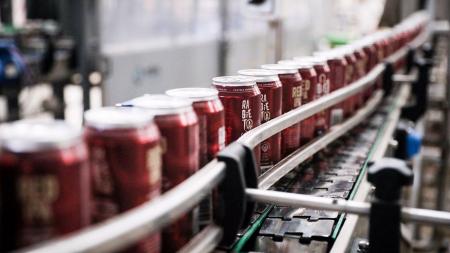The production of craft beer, a sector in the process of professionalization that adds value, generates work and aims to substitute imports, breaks records in Argentina and is positioned as a regional leader in Latin America.
With a grinding of more than one million tons of malting barley in 2022, the sector registered a historical record, according to the Ministry of Agriculture, Livestock and Fisheries of the Nation; and, according to a survey by the Chamber of Craft Brewers of Argentina (CCAA), there are some 2,500 craft breweries in the country.
“Argentina leads the craft production of beers in the region,” said Juan Manuel González Insfrán, president of the CCAA, who highlighted the international recognition that beers produced in the country obtain in different contests. international brewers.
For González Insfrán, “the tradition in wines and fermentations gives our country a great competitive advantage on a global scale.”
For his part, Pablo Morón, director of Added Value and Quality Management of the Ministry of Agriculture, Livestock and Fisheries of the Nation, remarked “the potential of microbreweries” and recognized that they are working on the professionalization of the sector to improve the entire productive chain of the artisanal type.
“More than 70 microbreweries from all over the country have already been trained with the various free online training tools that are available in the Ministry of Agriculture such as courses and tutorials, as well as a guide to good manufacturing practices (GMP) to increase the competitiveness of the sector, improve production processes and achieve beers with greater added value,” said Morón.

González Insfrán did not hesitate to point out that “one of the biggest challenges for the future is to continue being a benchmark in Latin America and to be able to develop craft beers that allow us to replace some imported products, as well as to impose our country’s own styles for all of Latin America”.
And he pointed out: “We aim to expand the range of beers with different styles”, in reference to current trends: from the modern ones from the United States with highly hopped beers, or the return to European styles, as well as aged beers. with mixed and experimental fermentations.
According to González Insfrán, “Until 2018 there was a very marked production boom, driven by consumers not satisfied with the traditional industry. Industrial beers in Argentina had, at that time, very elementary recipes and far from things that are found in other parts of the world”.

Another great differential of the craft beer production sector is the generation of jobs. According to the CCAA, “with only 2.5% of the market, craft production generates almost the same number of jobs as all industrial beers in Argentina”.
Among the achievements that stand out in the sector is the incorporation into the Argentine Food Code (CAA) of the specific criteria to be able to label these beers with the legend ‘artisanal elaboration’, obtained through the Comprehensive Assistance Project for Added Value in Agrifood (Procal).
“This allowed its commercial identification and a differentiated treatment that had a direct impact at the time of setting the rate of internal taxes on beers,” Morón explained.


















